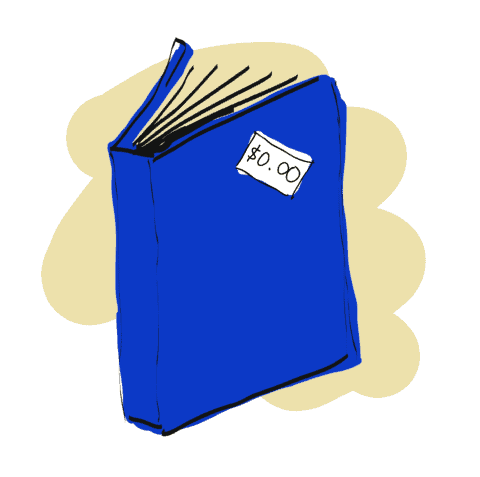Everyday, University of Saskatchewan students leave the comfort of their homes and expose themselves to the dangers of the world, just to go to the textbook store to spend their money on exorbitantly high-priced ink paper. However, it doesn’t need to be this way.
Every student knows that buying textbooks is a process that forcibly extracts what very little money still resides in our wallets and shoots it directly into a multimillion-dollar river of student fees. Regardless of whether textbooks are bought new or used, they amount to hundreds of dollars in expenses each semester, they depreciate quickly and they are often under-utilized as an expensive teaching tool.
The commerce surrounding textbook sales is driven by a heartless, conniving publishing industry. In a way, the textbook industry manages to take the benefits of a free market economy away from the consumer because the professor chooses what books are required, not the student.
A select few publishers have a monopoly on the textbook industry, giving them the power to set the disproportionate standard of prices. An economic analysis of textbook prices compared to a similar analysis of student income and spending proves the relationship between the two to be inadequate.
A 2015 American study showed that since 1978, the average cost of educational books has increased a whopping 812 per cent. This figure substantially exceeds the rising costs of medical expenses and the radical inflation of the real estate market.
In relation, the Student Government Resource Center claims that over the last decade, textbook prices have increased at three times the rate of inflation, causing these learning accessories to be one of the most financially draining student fees.
The profit from each textbook sale is unjustifiably concentrated to the publisher. For example, if a textbook was purchased for the low price of $100, the publishers would receive approximately $80.
Unnecessary updates and revisions saturate the market and degrade the value of used textbooks. Costly access codes completely eliminate the potential for a textbook to be reused by another student.
It’s clear that some sort of policy initiative needs to be introduced to create a fairer market within the textbook industry. That said, an even simpler solution is to take advantage of human innovation and use the Internet under the basis of open textbooks.
Open textbooks are similar to store bought textbooks, but are much more accessible because they’re published under an open license, providing a platform for textbooks to exist virtually. By removing the middle man and opening up the various ways to access required readings, students will be given a better chance to to save money and excel in school.
Student groups need to continue promoting open textbooks across college campuses. Ending the stranglehold of greed-riddled publishers should be among the top priorities for Canadian universities.
However, until open textbooks inevitably become the norm, there are a few different common sense life hacks that students can take advantage of.
Making secondhand purchases of anything is the greatest way to save money. Often times, making use of the “Buy/Sell Used Textbooks from the U of S” Facebook group is one’s best bet on saving 50 per cent or more off the original purchase price.
Alternatively, last semester, I took a class that had three fairly expensive required readings. I took the opportunity to form a study group resembling the cast of Community and split the $345 cost five ways.
Of course, not buying a textbook at all is the easiest way to keep one’s wallet full. A quick review of ratemyprof.com prior to taking a class is the most straightforward way to save money. Former students will write reviews of the professor and the specific class and they’ll hopefully also note how important the texts are to the overall class experience.
Take advantage of book buyback programs and take risks to avoid buying textbooks for now, but once you come to the realization that even buying secondhand textbooks costs too much, get angry and push for open textbooks and help make the college experience accessible and worthwhile for all.
—
Travis Hebert
Graphic: Lesia Karalash / Graphics Editor